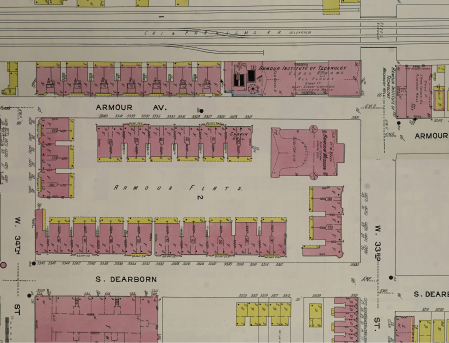Archaeological Field School Summer 2023 Excavation
The Archaeological Field School (SOAN 205) introduces students to the discipline of archaeology, with an emphasis on fieldwork and excavation. The 2023 Field School is on the Illinois Institute of Technology campus in Chicago. Serving as the excavation field crew, students learn excavation, recording, laboratory, and analytical techniques.
Dr. Rebecca S. Graff of Lake Forest College and Dr. Shannon Martino of Morton College are leading a group of students as they excavate the site of the Armour Mission, built in 1886, and the Armour Flats, built in 1888. Both structures were demolished in the early 1960s. In 2022, the neighborhood was designated the Bronzeville–Black Metropolis National Heritage Area.

Contact Information
Dr. Rebecca S. Graff
Instructor and Project Director, Summer 2023 Field School
Department of Sociology and Anthropology
Lake Forest College
847-735-5255
graff@lakeforest.edu
Dr. Shannon Martino
Instructor and Co-Director, Summer 2023 Field School
Humanities Department
Morton College
708-656-8000 ext.2286
shannon.martino@morton.edu
Frequently Asked Questions
What are you doing and why?
We are conducting an archaeological excavation on the campus of the Illinois Institute of Technology (IIT) to better understand the history of the site, from its origins as the Armour Mission (Burnham & Root, 1886) and Armour Flats (Patton & Fisher, 1888), to its place as a casualty of urban renewal when the structures were demolished (1961-2), to the neighborhood’s 2022 designation as the Bronzeville–Black Metropolis National Heritage Area. The work here will shed light on these processes of urban life and provide materials for an upcoming exhibit.
How did you choose this area to excavate?
In 2018, Graff was part of a team who worked to “rediscover” the remains of Chicago’s Mecca Flats (1892) on campus. The success of that project led IIT to invite further archaeological research. To select this site, we reviewed archival records and compared historic maps of the site with current satellite imagery, identifying potential areas for excavation.
Are you looking for a building? a burial? treasure?
We are interested in the material signature of urban renewal: how the inequitable, structural forces that created IIT and many other urban university campuses linger materially and spatially. Additionally, we are interested in what we can find about the lives of the former occupants of the Armour Flats, which first housed the officials and upper-level employees of Armour & Co. meatpackers and other tenants including faculty and students at the Armour Institute. Finally, we are looking for materials that illuminate the activities that took place within the Armour Mission in its role as a quasi-settlement house.
What are you finding?
We dig with hand tools, like trowels, which allow us to see the different layers of deposition, and we record the information about those layers. Then, we screen this material to recover artifacts. “Artifacts” can mean anything people have made and used, so we are recovering things like nails, bottle glass, and bricks.
What happens to the things after you’ve excavated?
We will spend the next several months analyzing the materials, which also includes cleaning and labeling all the artifacts to understand the significance of the total collection, rather than one nail or one bottle. From this analysis at the level of assemblage— along with further archival and historical research—we will put together all the pieces to learn about the people who worked, studied, and lived here.

